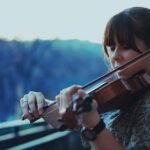They say Rome was not built in a day. Yet, had Rome been a road in the Aso Rock Presidential Villa, it might have been built in hours.
On my way into the premises last Thursday morning, I noticed a focused crew of construction workers working their magic on the main access road to the President’s office complex. My construction background kicked in, so I tried naming each piece of motorised machinery in sight.
Along a carriageway less than half a kilometre long, I counted at least 17 heavy machines operating in harmony: bulldozers tearing up the old surface, motor graders smoothing out the ground, asphalt pavers laying a fresh layer of tar, and road rollers compacting it all into place.
Nearby, dump trucks and bitumen sprayers stood ready. Vibratory compactors, milling machines, and even line-marking equipment were on standby, preparing those crisp white and yellow stripes. By evening, that portion of the road looked brand new. I’m told the work continued through midnight as the workers buzzed like bees to finish the job.
By the following day, the carriageway was nearly complete—just two months after the Federal Executive Council approved the project on February 4, 2025. Under that approval, the Federal Capital Territory Ministry secured a N20.4bn contract to rehabilitate roads such as Yakubu Gowon Crescent (leading to the Villa), Thomas Sankara Road, J.F. Kennedy Street, Ibrahim Taiwo Street, Muhammadu Ribadu Street, and Shehu Shagari Way (from N13OX junction to Maitama Roundabout).
At this pace, the project could be done before the President returns from his retreat in France.
Anyone familiar with this stretch of road would agree that rehabilitation was long overdue. Years of wear and exposure to the elements had baked the asphalt into cracks. The no-waiting yellow lines looked like they could be scraped off with a shoe. In some areas, you couldn’t tell one lane from the other.
I recall an old meme from the social media platform Reddit: it showed a pothole-ridden road with the caption: “In England, they drive on the left. In my country, we drive on what’s left.”
In a March 2024 piece subtitled ‘Potholes in Paradise,’ I wrote about a famous pothole drivers always try to dodge when leaving the State House Conference Centre. One visitor was stunned and said, “Pothole dey Villa too?” He, like many Nigerians, assumed the Villa was no less than Paradise.
When I first entered the premises, the serene ambiance caught my attention. More details, however, revealed themselves over time.
True, the air is fresher thanks to thick vegetation, but the roads are certainly not paved with gold or special asphalt. Waste bins hold trash, not naira notes, and many of the people who work there will not set eyes on the President in years.
After rehabilitating Usman Danfodio Crescent and filling all its potholes in early 2024, the FCT Minister, Nyesom Wike, turned to the final stretch of Yakubu Gowon Crescent leading to the President’s office.
However, the swift progress reminded me of other vital roads that never enjoyed such attention or stretched for too long due to complex circumstances.
One example is the Kano-Kaduna-Abuja Expressway, where a heartbreaking accident on March 6, 2016, claimed the life of a former Minister of State for Labour and Employment, James Ocholi (SAN), and that of his wife and son, near Rijana Village in Kaduna.
Shaken by the tragedy, the Federal Road Safety Commission launched an in-depth probe.
Within 72 hours, the then-Corps Marshal, Boboye Oyeyemi, appeared at the Villa to present President Muhammadu Buhari with a detailed interim report.
Rather than bowing and leaving, he presented a PowerPoint slideshow examining factors such as tire conditions, seat belt usage, speed levels, and road conditions. The team even performed an X-ray analysis of the crashed vehicle’s tires, illustrating just how meticulous official inquiries can get, depending on who and what is involved.
Make no mistake: the death of a federal minister carries weight and is worth the scrutiny.
Investigations also revealed that the convoy’s driver lacked a valid license. A burst tire and excessive speed contributed to the crash, and not everyone inside wore seat belts, including Ocholi and his son. This led to their violent ejection upon impact after the tire burst.
Despite the pothole near the crash site, investigators concluded it was not the immediate cause. Still, the mere mention of road conditions raised concerns. The FRSC’s ability to conduct such an extensive analysis in less than 72 hours showed how quickly agencies can move when necessary. Sadly, many accidents caused by poor road conditions pre- and post-Ocholi hardly get that much attention, as far as we know.
Barely eight weeks after Wike’s memo was approved, the Villa already sees tangible results. Understandably, many Nigerians would wish all the critical roads—plied daily by countless people—received comparable Villa-grade care.
While I do not dispute the need for prompt work on roads serving the seat of power, I wish similar urgency and dedication were extended to projects that benefit the average Nigerian.
If nearly 20 pieces of heavy machinery can converge on a road barely a kilometre in length, it seems only fair that this attitude should extend beyond the Villa to the rest of us.







